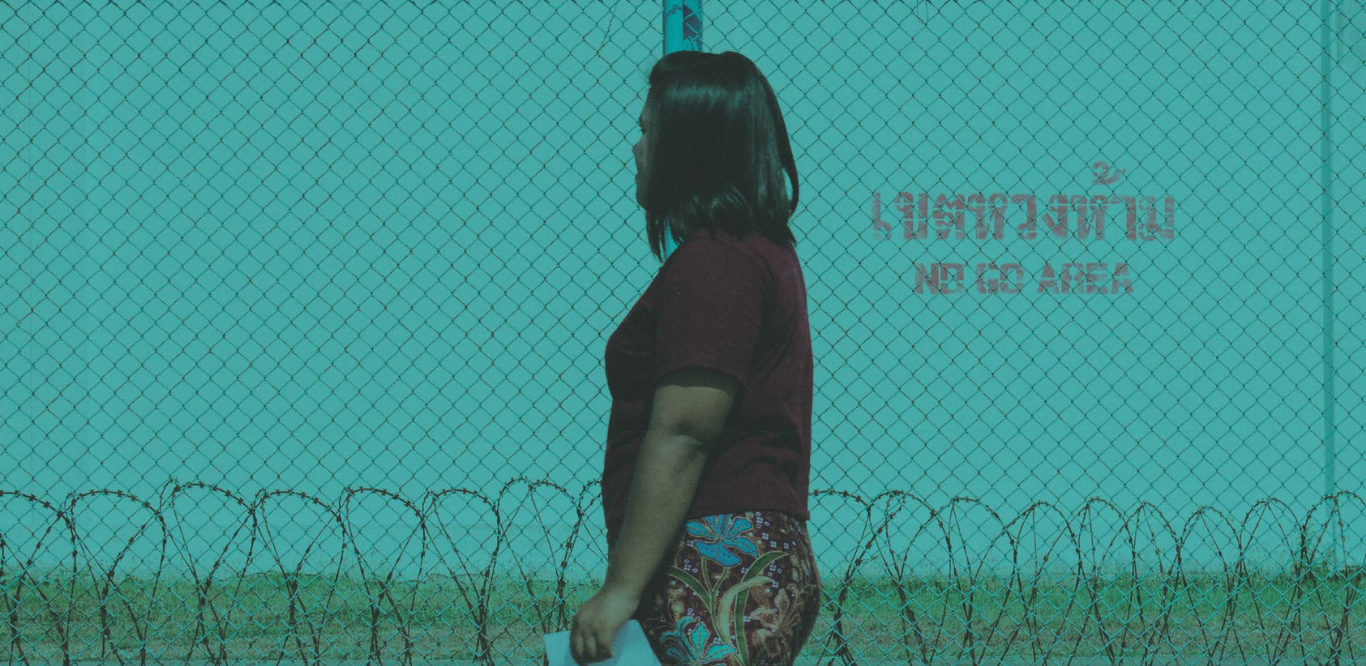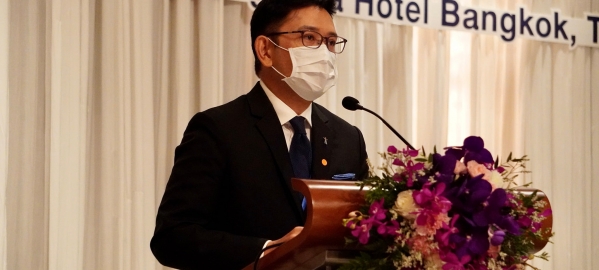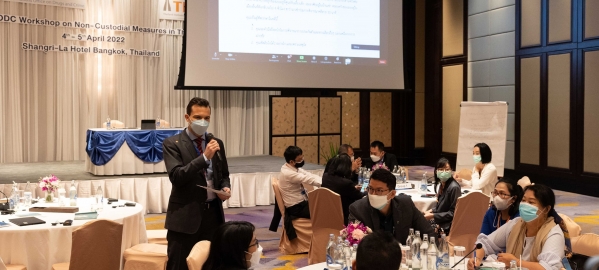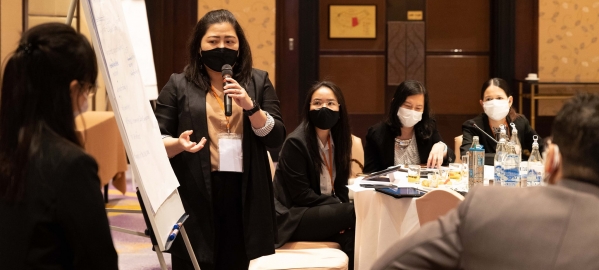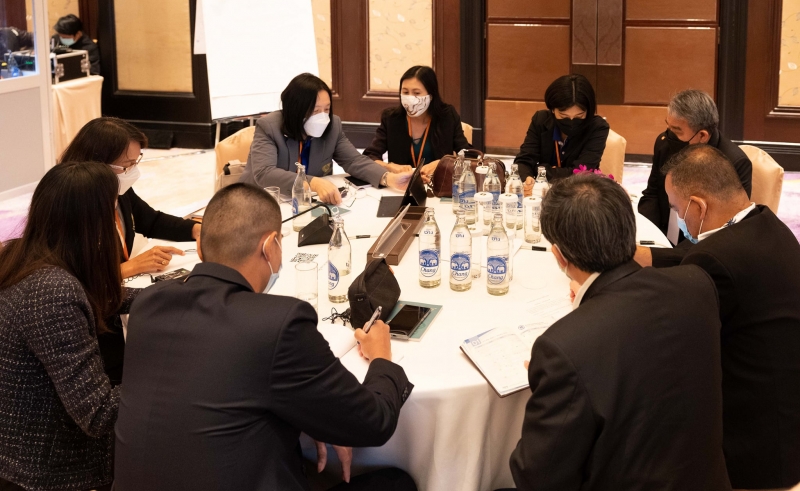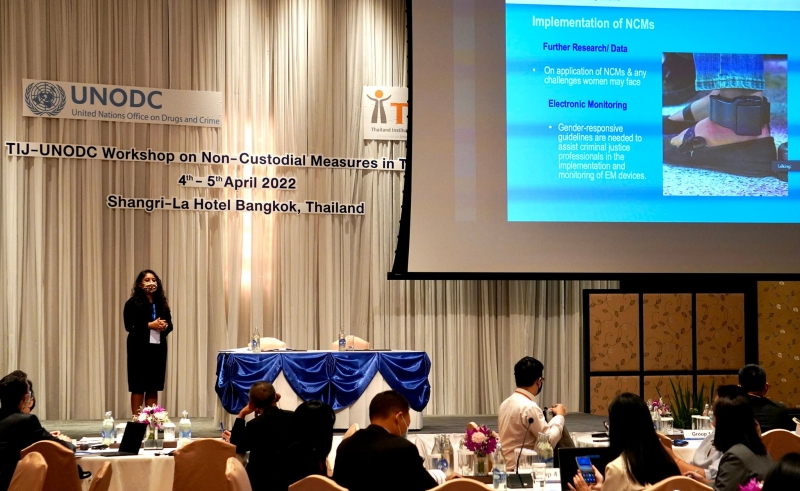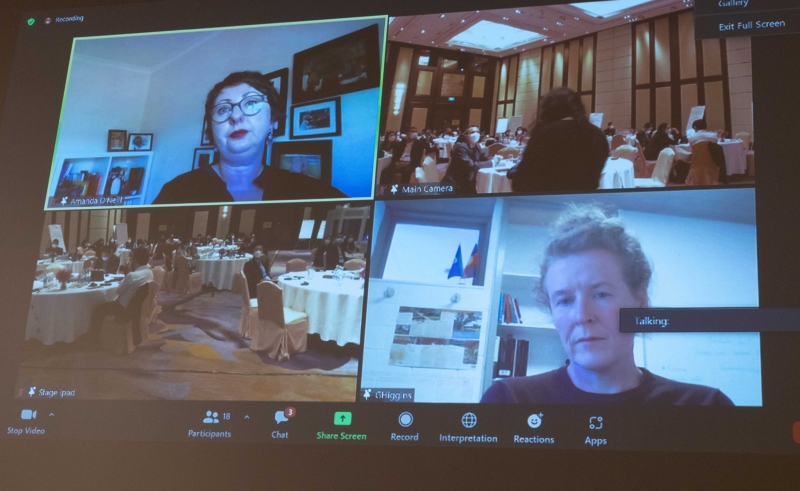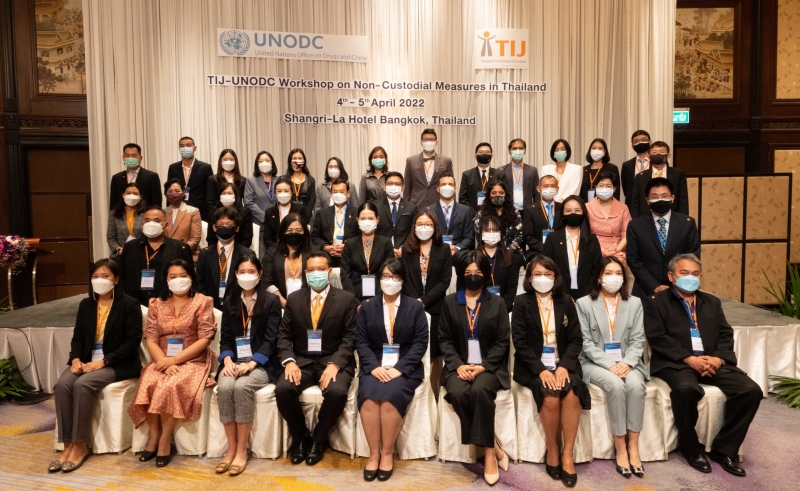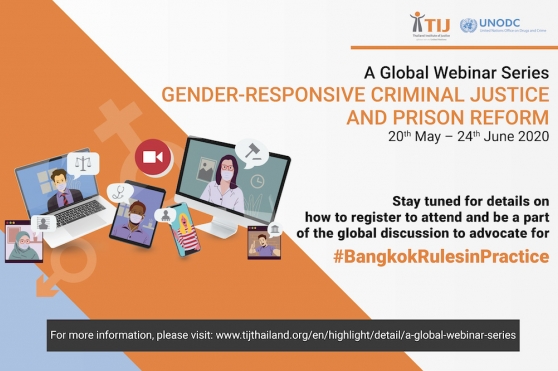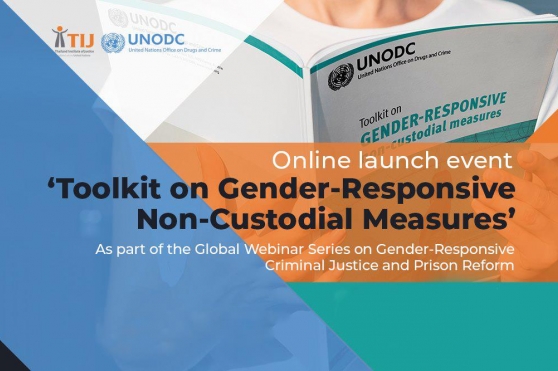Gender-Responsive Non-Custodial Measures - Solution to Female Prisoner Overcrowding
Thailand ranks the 7th country with the highest proportion of prisoners per population, with as high as 265,000 prisoners according to the data as of March 2022. More than 80 percent of the prisoners are offenders of narcotics-related offenses. Many prisoners are serving 3-5 years, mostly for having narcotics in possession for personal use or having a small amount for sale. They are not major dealers and most of them were held under pre-trial detention.
Even though female offenders constitute only 7 percent of the global prisoner population, the global trend is indicating that the women imprisonment rate is rising comparing to the number of male prisoners. This can also be seen happening in Thailand as well.
From this scenario, Thailand Institute of Justice (TIJ) and the United Nations Office on Drugs and Crime (UNODC) together hosted the “Workshop on Non-custodial Measures in Thailand” during the 4th-5th of April for the actors in the judicial process and other relevant agencies. The Workshop intended to promote and support the participants as the champions of Thailand in the application, distribution and implementation of knowledge and practice on non-custodial measures in Thailand. The important topics covered in the Workshop included: the importance of non-custodial measures and related international standards; current situation in the application of non-custodial measures; application of gender-responsive non-custodial measures; and present challenges and future approach. Also, the Thai version of “Toolkit on Gender-Responsive Non-Custodial Measures” was also launched in this Workshop.
Definition of the Gender-Responsive Non-Custodial Measures
Practices on gender-responsive non-custodial measures also includes action to actively address gender-responsive measures by helping criminal justice practitioners to become more gender-responsive and move from gender-unequal or gender-blind approaches to approaches that recognize, address and ultimately transform the gender norms, roles and inequalities that lead to discrimination against women in contact with the law.[1]
“This Workshop is the opportunity for us to reflect that the criminal justice system has been overly imprisoning offenders, resulting in the issue of prison overcrowding at present. Investment in the implementation of non-custodial measures can increase the efficiency of the delivery of justice to the people, eventually leading to the accomplishment of sustainable development.”, provided Sven Pfeiffer, representative from UNODC Justice Section.
It was also added that encouragement of gender-responsive non-custodial measures in Thailand should be able to reduce the enforcement of criminal laws against offenses committed by female offenders. Such offenses include substance abuse, non-violent narcotics offense, and other offenses relating to sexual behaviors and fertility. The approach can also strengthen the efficiency of prison administration, support peaceful rehabilitation and prevent recidivism.
“I am confident that this Workshop will stimulate the exchange of perspectives among participants. Situations from other countries will be shared along with the practices on offender management, what approaches are being taken in other countries. It will strengthen our belief and hope of bringing a change to the criminal justice system of Thailand through the implementation of gender-responsive non-custodial measures. This initiative will benefit the delivery of justice, ensure the safety of the society and build trust among the people.” Dr. Phiset Sa-ardyen, Executive Director of TIJ.
Overview of the current non-custodial measures
Sven Pfeiffer, representative from UNODC Justice Section, also introduced the importance of non-custodial measures and how the measures can mitigate the socioeconomic impact of the prisoners, their families and the communities, reduce national expenditures and recidivism as well as limit the chance of transferring criminal know-how from inside prisons.
At present, there are approximately 12 million prisoners worldwide. Around 3 million of which are being held in pre-trial detention. Therefore, non-custodial measures can be the alternative which can mitigate prison overcrowding and other aforementioned impacts. In many countries, such measures have been proven to be successful, i.e., the Netherlands, the United States of America, Wales and England, Costa Rica, and Germany. Non-custodial measures include granting bail without bond, conducting social services, wearing electronic ankle monitors, or being held under house arrest, etc.
Furthermore, such measures are also in line with international standards and United Nations requirements, i.e., United Nations Rules for the Treatment of Women Prisoners and Non-Custodial Measures for Women Offenders (the Bangkok Rules); United Nations Standard Minimum Rules for Non-custodial Measures (the Tokyo Rules); and United Nations Standard Minimum Rules for the Treatment of Prisoners (the Nelson Mandela Rules). The measures also align with Goal No. 5 (Achieve gender equality and empower all women and girls) and Target 16.3 (Ensure equal access to justice for all) of the Sustainable Development Goals, as well as the United Nation’s goal of leaving no one behind.
“The essential principle is to not discriminate and to ensure that all offenders are equally entitled to receive non-custodial measures before indictment; before and during trial, during sentencing process and after trial.”, provided Sven Pfeiffer.
However, the challenge of implementing non-custodial measures is the acceptance of the society. The society would like to see the offenders being punished rather than compromising. Hence, promotion and support are required to change the mindset of the society, i.e., raising the awareness among the people of the benefits of such measures to build understanding and acceptance.
Dr. Nathee Chitsawang, Advisor of TIJ, also delivered a presentation on the topic of Implementation of Non-Custodial Measures in ASEAN. Dr. Nathee presented that many countries in ASEAN are implementing such measures starting from the prison screening process to the post-trial stage. However, such implementation is far from robust and that leaves many countries facing prison overcrowding issue, especially, Indonesia, Philippines, and Thailand. While in Singapore and Malaysia, such measures are seriously implemented from the pre-indictment process; pre and during trial; during sentencing, as well as post-trial.
For Thailand, non-custodial measures are implemented, to certain extent, in all steps of the judicial process. Before indictment or prosecution, police officers can implement such measures by charging fines. During the trial, prosecutors may delay the prosecution process. If the case has been filed to the court, the court can also implement multiple non-custodial measures, i.e., granting probation order, requiring social services, putting the offender under house arrest or rehabilitation, granting furlough, requiring the offender to attend training and seek employment for the ultimate purpose of behavioral correction.
“What is common between ASEAN and Thailand is the majority of people believe that offenders deserve to be imprisoned, otherwise people will raise questions or seek justification as to why the offenders remain free. In ASEAN, many countries such as Cambodia, do not have a prison screening process. Even though there are legislations on probation and other non-custodial measures, they are not sufficiently enforced. The court will avoid delivering the verdict as such because they are not supported by standard procedures, hence the lack of driving force.”
“The most well-prepared country in ASEAN is Singapore. Their probation and social services are also very well-equipped. In the back end, they have in place the system to screen people out of prison and granting furlough, which are supported by efficient volunteering system. An association called Yellow Ribbon will look after the released convict. Singapore Corporation of Rehabilitative Enterprises (SCORE) will assist the convicts in seeking employment and professional training. Yellow Ribbon hosts campaigns encouraging the public to assist former convicts without stigmatization and to be open-minded for reformed prisoners.”
Dr. Nathee also added that, narcotics-related offense is the major issue for Thailand. With higher number of substance users and cheaper price of narcotics, users will purchase drugs in higher amount so that they do not have to buy often. Even though it may be the case of having in possession for personal use, but considering the amount of drugs possessed, the offender cannot avoid being prosecuted for having in possession for sale. Consequently, they will be convicted with imprisonment. Therefore, the Ministry of Justice has to implement alternative post-imprisonment measures or granting a royal pardon. Granting furlough is a special measure to screen people out of prison. Offenders of petty offenses, i.e., drug mules, will be released while the ones who are the threat to the society have to be retained in prison for security reasons.
In this Workshop, the participants were presented with experiences and they got to exchange their views on the current direction and implementation of non-custodial measures in Thailand with ML. Suppakit Jaroonroj, Secretary-General of Nitivajra Institute who is the subject matter expert and one of the speakers. ML. Suppakit explained about the authority of public prosecutors and the exercise of discretion in the context of Thailand. Dr. Yossawan Baribunthana from the Department of Probation, Ministry of Justice, mentioned the implementation of non-custodial measures after trial. Mr. Stephen Pitts discussed about early release and probation. Dr. Peter J.P. Tuck discussed about how to implement non-custodial measures in Thailand.
On the second day of the Workshop, focused discussion on Gender-Responsive Non-Custodial Measures were conducted. The session included the presentation by Sabrina Mahtani, Chief Advisor of UNODC, on the report on the evaluation of gender-responsive non-custodial measures implementation in Thailand. After that, experts on the non-custodial measures prior to indictment, pre, during and after trial from multiple countries discussed the solutions and challenges faced during the implementation.
It can be concluded from the second day of the Workshop that most women who entered the justice system were the product of punitive measures implemented against women with substance abuse or those who committed non-violent narcotics offense, as well as offenses relating to sexual behavior and fertility. Women often face discrimination in the justice system, particularly, indigenous or minority women and sex workers. Also, these women suffer higher economic impact comparing to the male counterpart. In many countries, women are living in poverty and excluded from education and employment, while they have to feed the family. Most offenses committed by women are caused by poverty and their needs to support their families, rather than to intentionally commit violent crimes.
Therefore, imprisonment affects women both socioeconomically, physically and mentally. For example, women penitentiaries are lower in number comparing to male penitentiaries and most of them are located quite far from their homes. Female prisoners, therefore, have to be taken away from their families and children. It was also reported that suicide rate among female prisoners is higher than male prisoners. Once they are released, they are also stigmatized, disabling them from finding employment, contributing to recidivism. The use of EM bracelet also affects women emotionally because EM bracelet has not been designed specifically for women, causing discomfort and embarrassment for the wearer. EM bracelet runs on battery and has to be recharged, costing more expenses for the wearer.
Policymakers and professionals in criminal justice system need to understand these background factors before sentencing a woman. Non-custodial measures are one of the approaches that can reduce the impact against women.
Women offenders of non-violent crime also have the alternative measures of case diversion. This includes conditional and unconditional release, mediation, reimbursement or compensation to the victim, undertaking of social service, implementation of restorative justice, gender-responsive rehabilitation and referral to community support.
However, aside from the laws, legal process and enforcement, the main challenge for the implementation of gender-responsive non-custodial measures is to build a mindset of acceptance among members of the society. This will need collaboration across sectors to generate acceptance in the society, both domestically and internationally, on non-custodial measures as the solution to prison overcrowding and mitigation of negative impact on offenders.
Download “Toolkit on Gender-Responsive Non-Custodial Measures”
[1] United Nations Office of Drug and Crime (UNODC) and Thailand Institute of Justice (TIJ), Toolkit on Gender-Responsive Non-Custodial Measures (2020), Introduction: What are gender-sensitive and gender-responsive approaches?, Page 3.



